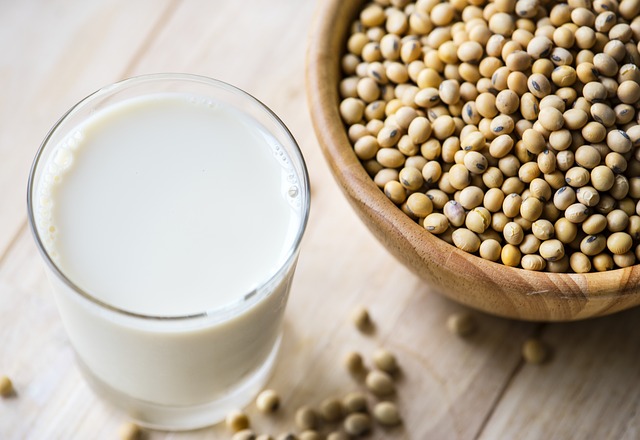Osteoarthritis is a degenerative joint disease whereby the protective cartilage that cushions the ends of joining bones wears down. Osteoarthritis commonly affects the hands, knees, hips and spine [1]. It is a condition that develops slowly and worsens over time. Pain during movement is the most common symptoms. Your joint can also become stiff after being inactive. You may also experience a loss of flexible motion. Sometimes, the joint may pop or crackle when move, and become inflame and swelled [2].

Osteoarthritis can be a result of natural aging; the joint tissues degrade due to wear and tear. Being overweight or obese also contribute to its development and worsening of the symptoms. People who are obese will develop osteoarthritis earlier in life [3]. However, those who are physically active and frequently engage in impact sport can also develop osteoarthritis due to injuries. Genetics also play a part. If osteoarthritis is common in your family, it is also likely that you may have it sooner or later [3].

Sports injuries can also lead to osteoarthritis.
How can we prevent the development of osteoarthritis? We can’t change the genes we have and the fact that we will grow old. However, there are certainly ways to delay the deterioration of the joints. If your joints are starting to give way, you need to like to ease the pain and reduce the impact. Here are some suggestions:
Lose Weight
If you are overweight or obese, reducing body weight can be a practical approach to prevent and improve the symptoms of osteoarthritis. A study conducted among 240 overweight or obese older adults knee osteoarthritis found that long-term weight loss of about 10% to 20% can result in pain reduction and improvement in physical function [4].

Protect your joints
You can wear joint protecting braces, such as knee sleeves, to support your joints and prevent injuries during exercise. Bracing helps to change the weight loading at your joint and stabilizing the joint on impact. Braces are especially recommended for treating knee osteoarthritis [5].

Reduce inflammation
Recent research has found that low-grade inflammation plays a role in the development of osteoarthritis. Low-grade inflammation is not visible externally. It can be detected under magnetic resonance imaging or ultrasound scan, as well as via specific biomarker in the blood, such as the C reactive protein [6].
One herbal remedy for reducing inflammation for osteoarthritis is the curcumin and Boswellia formulation. Curcumin is a bright yellow chemical produced by the Curcuma longa, commonly known as turmeric. Boswellia, also known as frankincense, is a herbal extract from the resin of Boswellia serrata tree. The combination of curcumin and Boswellia is an effective remedy for reducing inflammation and pain with good results shown in many clinical studies [7].

Curcumin from turmeric is an excellent anti-inflammatory herb. 
Frankincense, is a herbal extract for joint pain from the resin of Boswellia serrata tree.
Watch your diet
Diet plays a role in the prevention of osteoarthritis. Research shows that a diet that helps to low cholesterol can also benefit osteoarthritis patients. Hence, avoid oily or processed meat, eat more fruits and vegetables, and increase intake of omega-3 fatty acids by taking salmon, avocados, and chia seeds [8]. Eat more sulphur-containing foods, such as asparagus, eggs, garlic, and onions. They contain cysteine, an amino acid that is the building block of joint cartilage [9]. Other beneficial foods include whole grains, oatmeal, brown rice, fish, and soybean products. Red cherries can relieve pain and inflammation [10].
Conclusion
Osteoarthritis is a painful condition, and there is no effective treatment other than symptom management. Hence, it is essential to learn to prevent and delay the progression of this condition. A combination of weight loss, wearing joint protecting braces, reducing inflammation, and eating a healthy diet can have to put osteoarthritis at bay naturally.
References
[1] D.J. Hunter, D.T. Felson, Osteoarthritis, BMJ. 332 (2006) 639–642. doi:10.1136/bmj.332.7542.639.
[2] Osteoarthritis – Symptoms and causes – Mayo Clinic, (n.d.). https://www.mayoclinic.org/diseases-conditions/osteoarthritis/symptoms-causes/syc-20351925 (accessed July 30, 2019).
[3] D. Chen, J. Shen, W. Zhao, T. Wang, L. Han, J.L. Hamilton, H.-J. Im, Osteoarthritis: toward a comprehensive understanding of pathological mechanism, Bone Res. 5 (2017) 16044. doi:10.1038/boneres.2016.44.
[4] S.P. Messier, A.E. Resnik, D.P. Beavers, S.L. Mihalko, G.D. Miller, B.J. Nicklas, P. deVita, D.J. Hunter, M.F. Lyles, F. Eckstein, A. Guermazi, R.F. Loeser, Intentional Weight Loss in Overweight and Obese Patients With Knee Osteoarthritis: Is More Better?, Arthritis Care Res. (Hoboken). 70 (2018) 1569–1575. doi:10.1002/acr.23608.
[5] F. Rannou, S. Poiraudeau, J. Beaudreuil, Role of bracing in the management of knee osteoarthritis, Curr. Opin. Rheumatol. 22 (2010) 218–222. doi:10.1097/BOR.0b013e32833619c4.
[6] C.R. Scanzello, Role of low-grade inflammation in osteoarthritis, Curr. Opin. Rheumatol. 29 (2017) 79–85. doi:10.1097/BOR.0000000000000353.
[7] R.R. Bannuru, M.C. Osani, F. Al-Eid, C. Wang, Efficacy of curcumin and Boswellia for knee osteoarthritis: Systematic review and meta-analysis, Semin. Arthritis Rheum. 48 (2018) 416–429. doi:https://doi.org/10.1016/j.semarthrit.2018.03.001.
[8] S. Thomas, H. Browne, A. Mobasheri, M.P. Rayman, What is the evidence for a role for diet and nutrition in osteoarthritis?, Rheumatology (Oxford). 57 (2018) iv61–iv74. doi:10.1093/rheumatology/key011.
[9] M.E. Nimni, B. Han, F. Cordoba, Are we getting enough sulfur in our diet?, Nutr. Metab. (Lond). 4 (2007) 24. doi:10.1186/1743-7075-4-24.
[10] H.R. Schumacher, S. Pullman-Mooar, S.R. Gupta, J.E. Dinnella, R. Kim, M.P. McHugh, Randomized double-blind crossover study of the efficacy of a tart cherry juice blend in treatment of osteoarthritis (OA) of the knee, Osteoarthr. Cartil. 21 (2013) 1035–1041. doi:10.1016/j.joca.2013.05.009.






